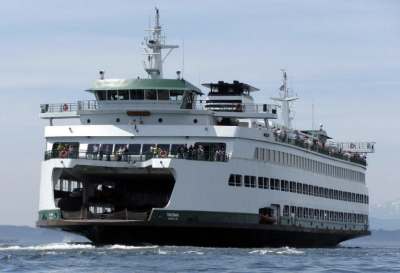(Bloomberg)— Hanjin Shipping Co., the South Korean container line whose filing for bankruptcy protection roiled the global supply chain, could have survived if creditors had provided the company with aid, Group Chairman Cho Yang-ho said.
It’s now up to the court to decide on the fate of the container line, Cho said in his first public comments since the company filed for court receivership Aug. 31 after lenders halted all support. The executive, speaking at a parliamentary hearing in Seoul Tuesday, said it was “regrettable” that Hanjin Shipping had to make the filing.
Companies such as Samsung Electronics Co. saw their goods delayed ahead of the year-end holiday season as Hanjin’s ships were stranded at sea after the bankruptcy-protection filing by the company, once the world’s seventh-biggest container line. A court in Seoul, which has established a committee to evaluate Hanjin, said Sept. 28 it was considering selling the entire company, while the container line is required to submit its proposal for revival by Dec. 23.

Cho Yang-ho, Hanjin Group chairman. Creative Commons photo by Jeon Han / Government of the Republic of Korea.
“We believe Hanjin Shipping’s troubles could have been avoided if creditors had provided support,” Cho said. “We had submitted to creditors a plan to inject 500 billion won ($451 million) into Hanjin Shipping over a two-year period.”
Cho apologized for the supply-chain disruptions and said the company suffered from fierce competition. A quick revival of Hanjin would be key to fending off competition, he said.
Hanjin Shipping controlled 2.9% of the global container shipping market before its filing. As of Sept. 21, its market share had fallen to 2.6%, making the company the 10th biggest, falling from seventh place, according to shipping data provider Alphaliner.
Korean Air Lines Co., the biggest shareholder of Hanjin Shipping, agreed last month to provide 60 billion won in new loans to help ease the cargo disruptions. The container company’s main lender, Korea Development Bank, offered a conditional credit line of 50 billion won and Cho supplied 40 billion won.
Before creditors halted all support to Hanjin Shipping, Cho had planned to give 100 billion won of his personal wealth to help prop up the company, the executive said. Korean Air, also part of Hanjin Group, had been ready to provide 400 billion won.
Hanjin Group injected 2 trillion won into Hanjin Shipping after taking over the company in 2014, helping cut the shipping line’s debt-to-equity ratio to 800% from 1,400%, Cho said. The company had also reported four quarters of operating profit, he said.
The container line applied for court receivership to prevent its vessels from being seized and the situation would have been worse without the filing, Hanjin Shipping Chief Executive Officer Seok Tae-soo said. The company had looked to improve its profitability by buying more fuel-efficient vessels and also sold assets to secure liquidity, Seok said.
Slowing trade and excess shipping capacity have depressed freight rates and piled up losses at some container lines including Hanjin and Hyundai Merchant Marine Co., the top two in South Korea. The smaller competitor managed to obtain financial help after meeting all requirements set by creditors led by state-run Korea Development Bank.
“Shipping is an important part of Korea’s economy as it handles more than 90% of the country’s exports,” Cho said. “I believe the shipping industry should be saved regardless of who takes control of” Hanjin Shipping, he said.
Bloomberg News by Kyunghee Park





